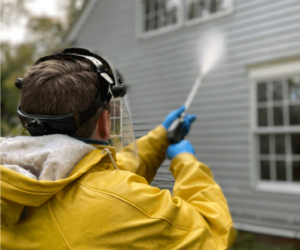A reaction paper, also known as a response paper, is one of the most commonly assigned projects in school. While this assignment may seem easy, there is more to it than just writing down whatever comes to mind. The approach is more systematic and the content more organized. This post teaches you the basics on how to write a response paper as well as other aspects like response paper format.
What is a Reaction Paper
A reaction paper, also known as a response essay, is a written work that presents the writer’s response to a text. Response in this context may include thoughts, feelings, or even interpretations. Meanwhile, text refers to any material that the writer is responding to such as a book, an article, a film, a work of art, or even an event or experience.

1. Starting a Reaction Paper
Now that we have discussed the reaction paper definition, let’s move on to discussing how to write a reaction paper itself. You may be wondering how to start a reaction paper. Like any other writing project, you need to begin with reviewing the resources, in this case the text itself. Follow the steps below:
- Engage with the text. Give the text your full attention. Make notes of important, interesting, or remarkable details; think about how it connects with other texts you have encountered before.
- Brainstorm. Once you finish engaging with the text, proceed to gathering your ideas together and organizing them. Think about what the text made you think of or how it made you feel. Then arrange these details into a coherent whole.
- Formulate a thesis. Boil down your ideas into a single overarching idea. This will serve as your thesis statement.
- Create an outline. Develop individual points that support your thesis. Remember, each of the points you make should work towards proving, defending, or elaborating your thesis statement.
Once you have a thesis and an outline, you will have already completed the initial steps of writing a reaction paper. You can write the assignment by using the outline as a guide. Expand each and every point you made, taking care to ensure that they always advance your thesis. You can even begin with the body of the essay, since the introduction in reaction paper can be written last.
2. Outline of a Reaction Paper
The basic reaction paper outline is mostly similar to the outline of a regular essay. There should be three main parts: introduction, body, and conclusion. These three parts, in turn, need to be divided into subparts. The explanation below details some of the components most commonly expected in this type of essay.
- Introduction. This section is usually expected to accomplish the following requirements: introduce the topic of the essay; present the text you are writing about; provide some context such as why the topic or the text is important; most importantly, present the thesis statement.
- Body. The body is where most of the discussion takes place. In most cases, you may need to provide a brief summary of the text. Then discuss your thoughts, how the text made you feel, and the text’s connection to others.
- Conclusion. The conclusion should restate the thesis, recap the main points, and provide parting remarks. This is also the section where you may recommend the text or encourage further engagement with related texts.
Bear in mind that this is a rudimentary outline. Do not forget to read the instructions carefully to ensure that you meet all the criteria. Also, whatever the content of your essay may be, make sure that you present them in an organized way. For example, arrange your points thematically.
3. Format of a Reaction Paper
The format that you should use depends on the instructions you are given. For instance, some professors want their students’ essays to be formatted according to very specific requirements, whereas others do not. If you are not sure how the essay should be formatted, it’s best to ask your professor. Below are some response paper guidelines that you can follow when formatting the assignment.
- Follow the standard essay structure. If unsure about the format of your assignment, better be on the safe side by writing a full essay by including an introduction and a conclusion. More than 90% of the time professors require the three major parts to be present, as opposed to the rare times when professors allow students to skip writing introductions and conclusions.
- Use the appropriate citation style. If the professor did not identify the citation style to be used, choose the appropriate citation style instead. Subjects under the humanities usually use MLA; those under the social sciences use APA; Chicago and Harvard are highly flexible and can be used in almost every subject.
- Use formal language. Use formal language. Just because the content tends to be personal and subjective doesn’t mean the language should sound informal or sloppy. You can even use first person language and still make the discussion formal-sounding.
These are some of the formatting guidelines you can follow when writing. In the end, any uncertainty with regard to such matters should prompt you to take the safer choice. Professors are more forgiving towards papers that exceed the requirements than those which fall short of expectations.

4. Examples of Reaction Paper
One of the best ways to improve writing skills is by looking at completed works. It will help if you look at a reaction paper example available on the internet. For example, a sample reaction paper of an article will allow you to see how the writer constructed the essay. Below are three examples that can help you get started.
- Sample 1. This response paper example presents the writer’s reaction to Maya Angelou’s autobiography I Know Why the Caged Bird Sings. Note how the writer placed the discussion within the context of race relations and racism.
- Sample 2. This short essay shows the writer’s response to William Faulkner’s short story “A Rose for Emily.” Notice how the writer integrates both a summary of the story and a feminist perspective in the discussion.
- Sample 3. This short essay on Toni Morrison’s novel Sula shows good organization of sections. The writer begins by summarizing the story and then discussing the key takeaways from the text.
Learning by studying examples is a fool-proof strategy. Examples show you how an essay should appear once they are complete and have met the criteria. Think of reading examples as similar to reverse engineering. You study the way something is built by breaking down something to its essential parts.
5. Getting Help for Reaction Paper
Completing written projects is a rewarding experience. But not all students have the time or energy. This is why there are companies that specialize in assisting students with their assignments. These companies employ professional writers who can complete your essay faster than you can say “help me write a reaction paper.” All you need to do is go to their website, place your order, and communicate with your writer.



